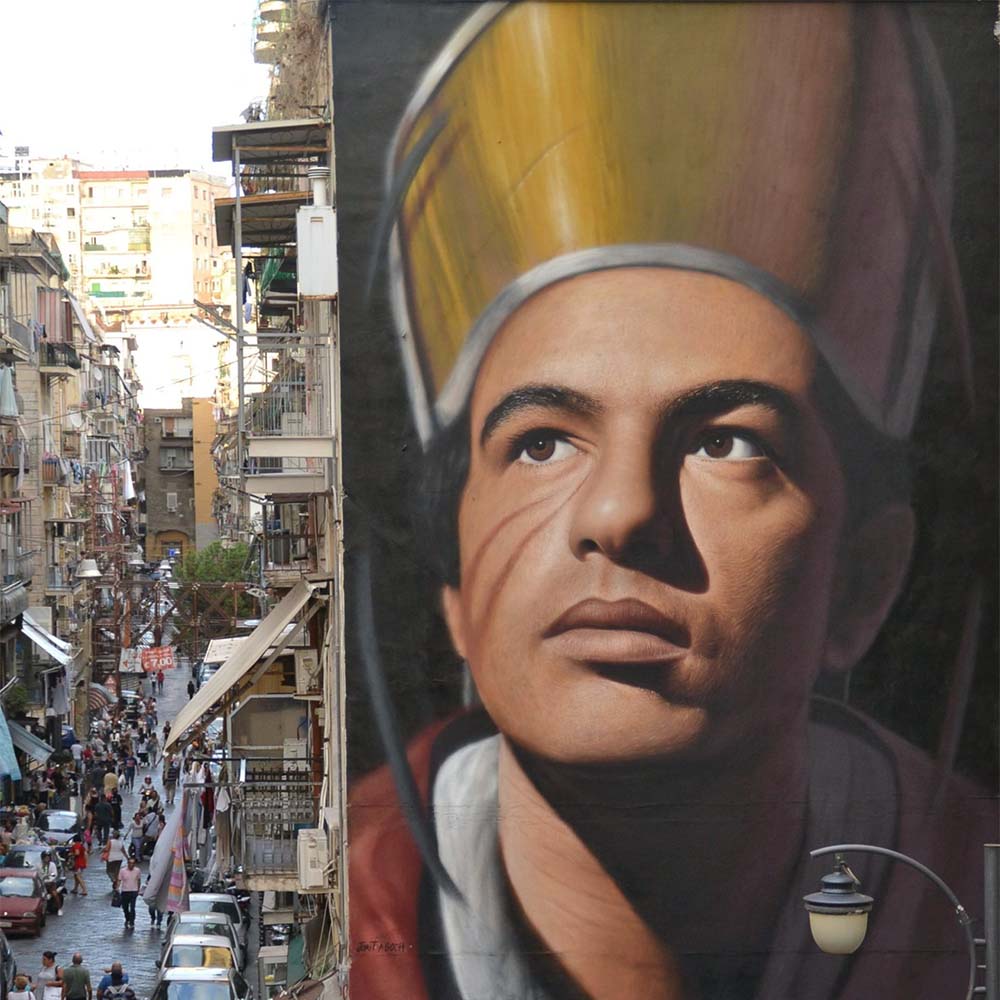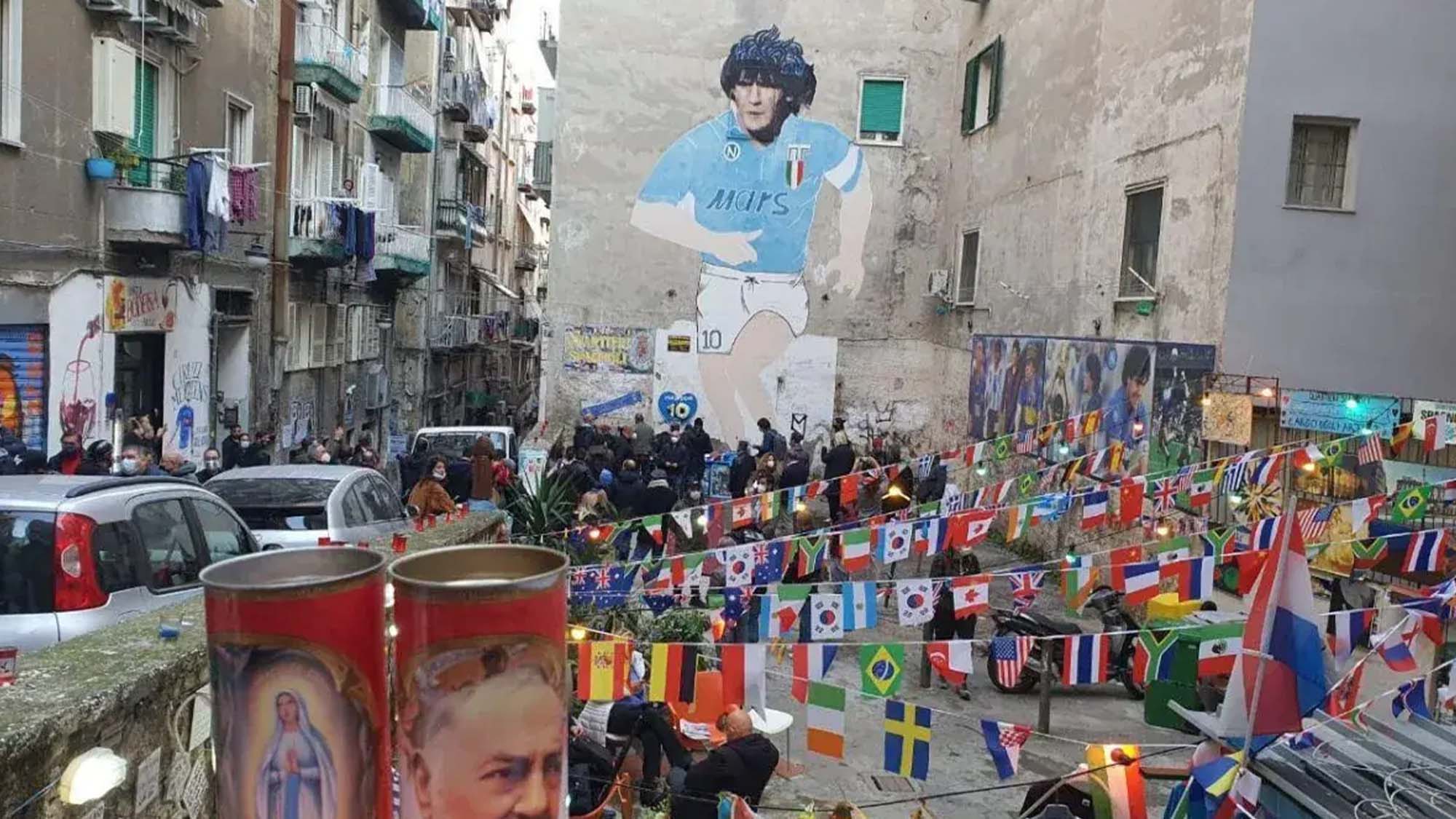Naples is one of the Italian cities with the liveliest and most diverse street art heritage.
Not just in quantity — but in meaning. Here, a wall is never neutral.
It’s a medium, a message, a piece of history constantly being rewritten.
You’ll find the signature of Jorit, with his monumental portraits that look passersby straight in the eyes: Maradona, Angela Davis, Che Guevara, San Gennaro.
Faces that become symbols — speaking of resistance, identity, and belonging.
Then there’s the delicate touch of Roxy in the Box, who plays with pop imagery to tell the story of Neapolitan irony through reimagined icons, sweet provocations, and colors that smile.
And let’s not forget the anonymous artists: those who leave behind a hand-drawn heart, a poetic phrase, a stylized Madonna.
A gesture of love for the city and those who live it every day.


In the Spanish Quarters, in Forcella, in Materdei
Street art is never just decoration. It’s resistance, affection, memory.
It’s the voice of those without a stage but with a brush — and something to say.
And then, there’s her: the Madonna with the Gun, who appeared years ago on a wall in the Quartieri Spagnoli. They say it might be a Banksy. Maybe yes, maybe no.
But it hardly matters.
Because it’s become a symbol, a paradox, a visual short circuit that perfectly tells the story of Naples, the coexistence of sacred and profane, devotion and conflict, faith and survival.
In Naples, a wall is never just a wall.
It’s a page, a prayer, a protest, a poem.
Art isn’t just meant to be looked at. It’s meant to be walked through
What makes street art in Naples so unique is that you don’t need to look for it.
It finds you.
While you’re searching for a pharmacy, following the smell of a hot frittatina, or getting lost by accident. Any wall might surprise you. Any corner might become a manifesto.
And when your eyes are full — It’ll be time to fill your stomach too.
News



